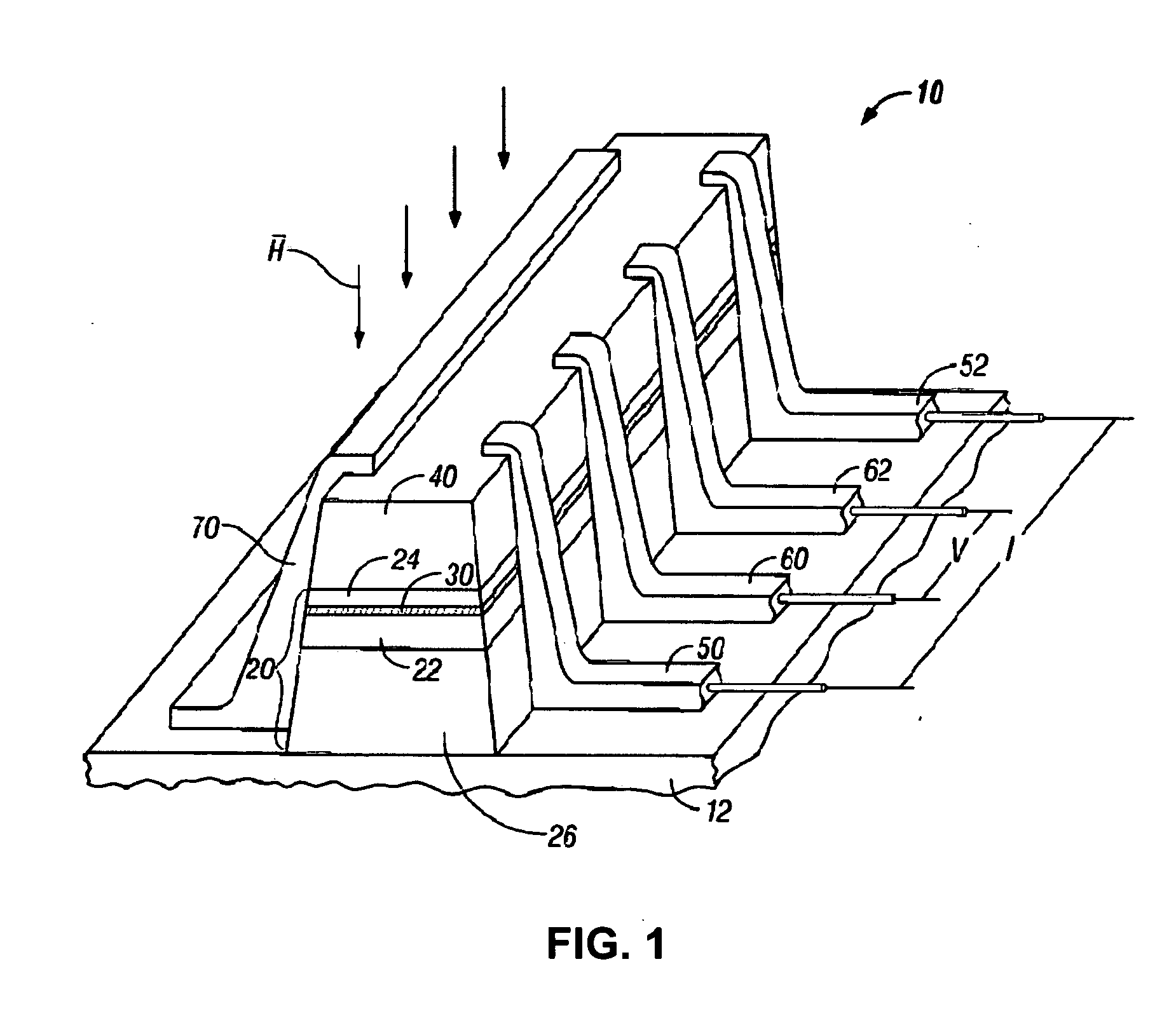Positioning of a magnetic head in a magnetic data recording device using a multiple sensor array
a technology of magnetic head and array, applied in the field of magnetoresistive sensors, can solve the problems of increasing sensor noise, unable to achieve further reduction in size, and the sensor is rapidly approaching a limit beyond, and achieves significant increments in the density of the areal, high spatial resolution of the sensor elements, and high magnetoresistive response.
- Summary
- Abstract
- Description
- Claims
- Application Information
AI Technical Summary
Benefits of technology
Problems solved by technology
Method used
Image
Examples
Embodiment Construction
[0032] The following description is of the best embodiments presently contemplated for carrying out this invention. This description is made for the purpose of illustrating the general principles of this invention and is not meant to limit the inventive concepts claimed herein.
[0033] The present invention utilizes an integrated read and servo device comprising two (or more) closely positioned narrow track EMR devices. For instance, two dedicated EMR sensors can be employed: one for data reading and one for servo operations.
[0034] Because EMR technology is new, to aid the understanding of the reader the following description shall begin with a description of EMR sensors, followed by a description of the integrated read and servo device.
EMR Sensor
[0035]FIG. 1 is an isometric view of an EMR sensor 10 according to one embodiment. The EMR sensor 10 includes a structure 20 that is a III-V heterostructure formed on a semiconducting substrate 12 such as GaAs. However, the EMR sensor de...
PUM
| Property | Measurement | Unit |
|---|---|---|
| magnetic field | aaaaa | aaaaa |
| diameter | aaaaa | aaaaa |
| width | aaaaa | aaaaa |
Abstract
Description
Claims
Application Information
 Login to View More
Login to View More - R&D
- Intellectual Property
- Life Sciences
- Materials
- Tech Scout
- Unparalleled Data Quality
- Higher Quality Content
- 60% Fewer Hallucinations
Browse by: Latest US Patents, China's latest patents, Technical Efficacy Thesaurus, Application Domain, Technology Topic, Popular Technical Reports.
© 2025 PatSnap. All rights reserved.Legal|Privacy policy|Modern Slavery Act Transparency Statement|Sitemap|About US| Contact US: help@patsnap.com



